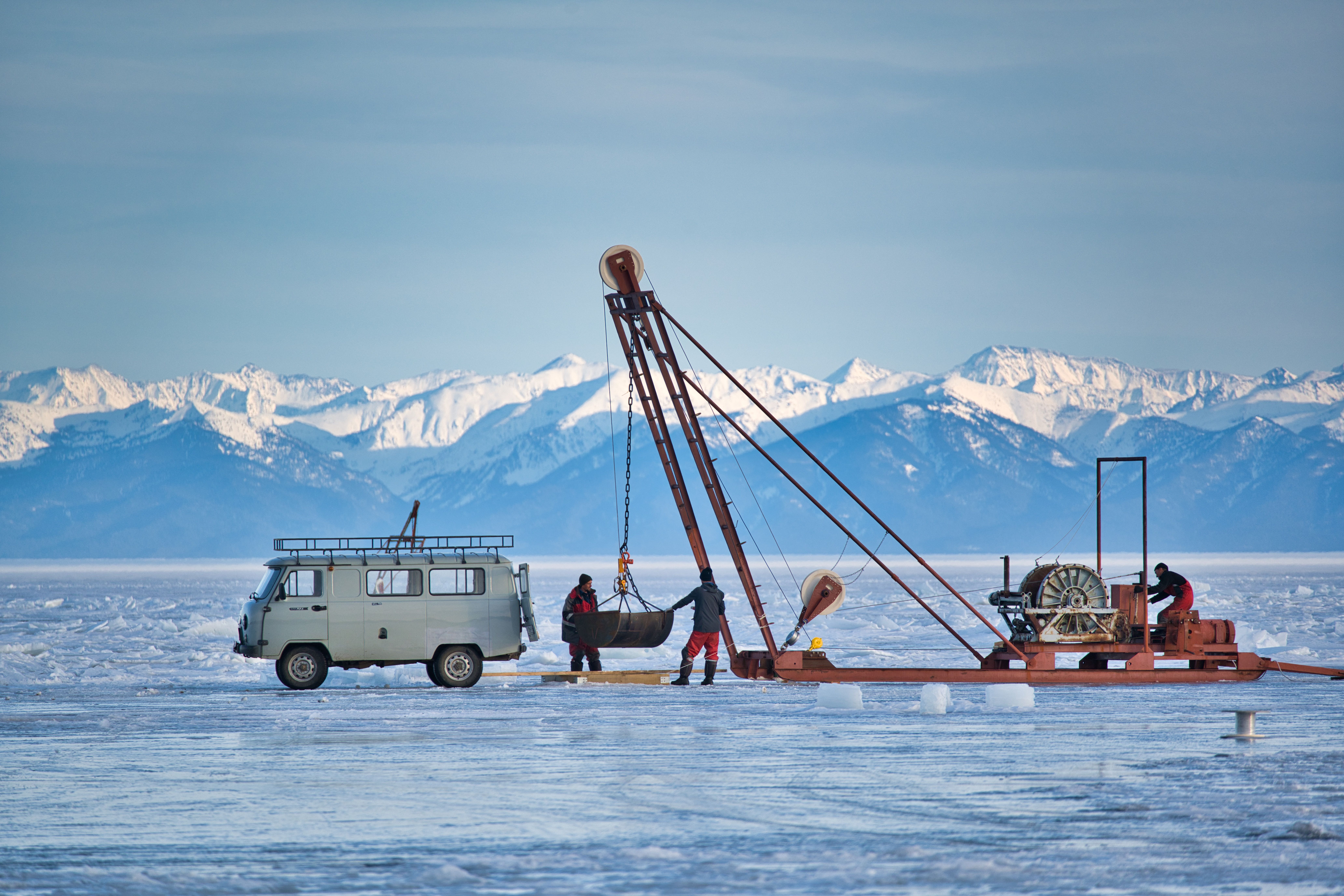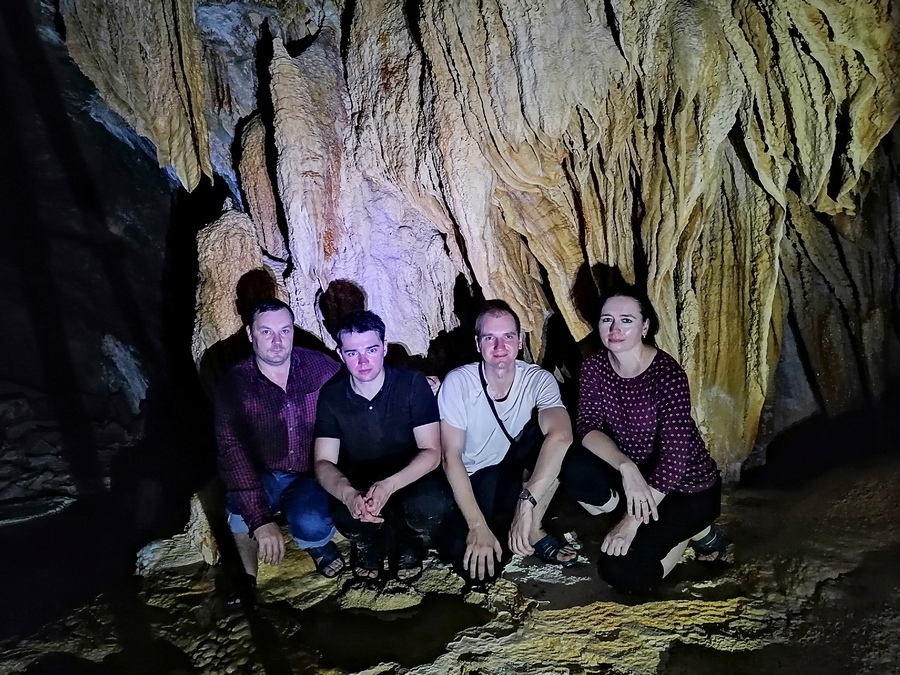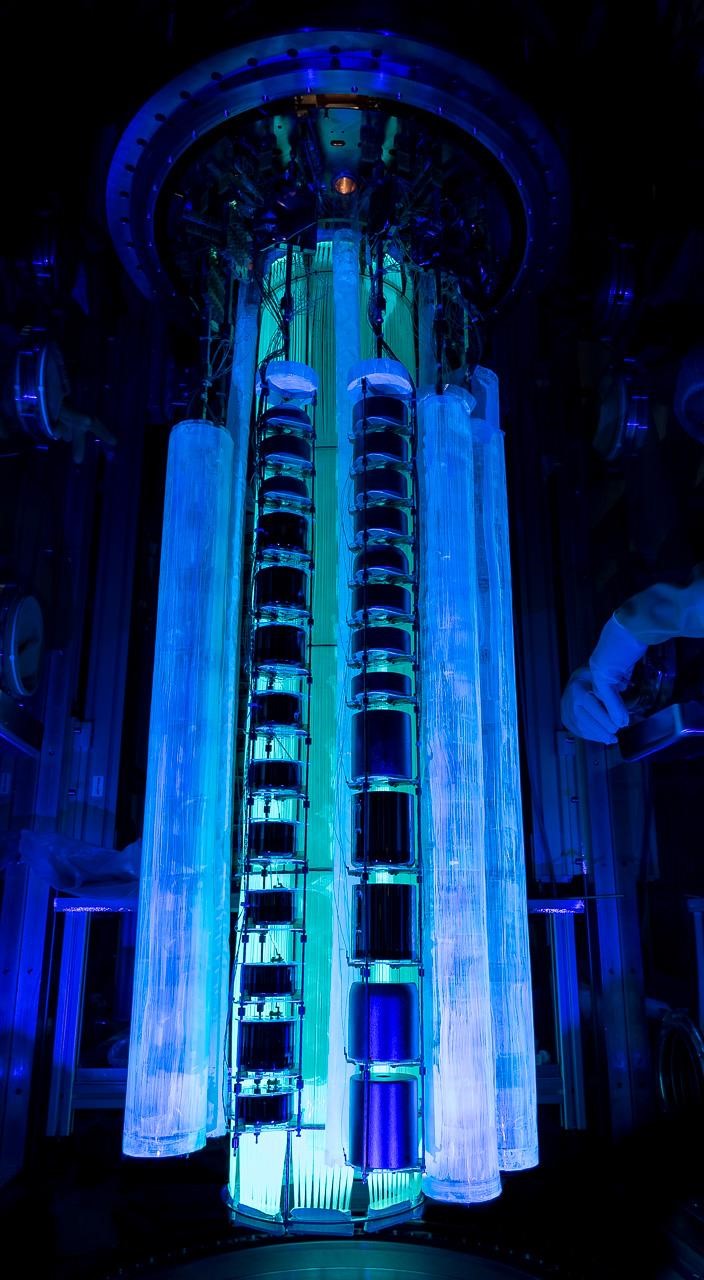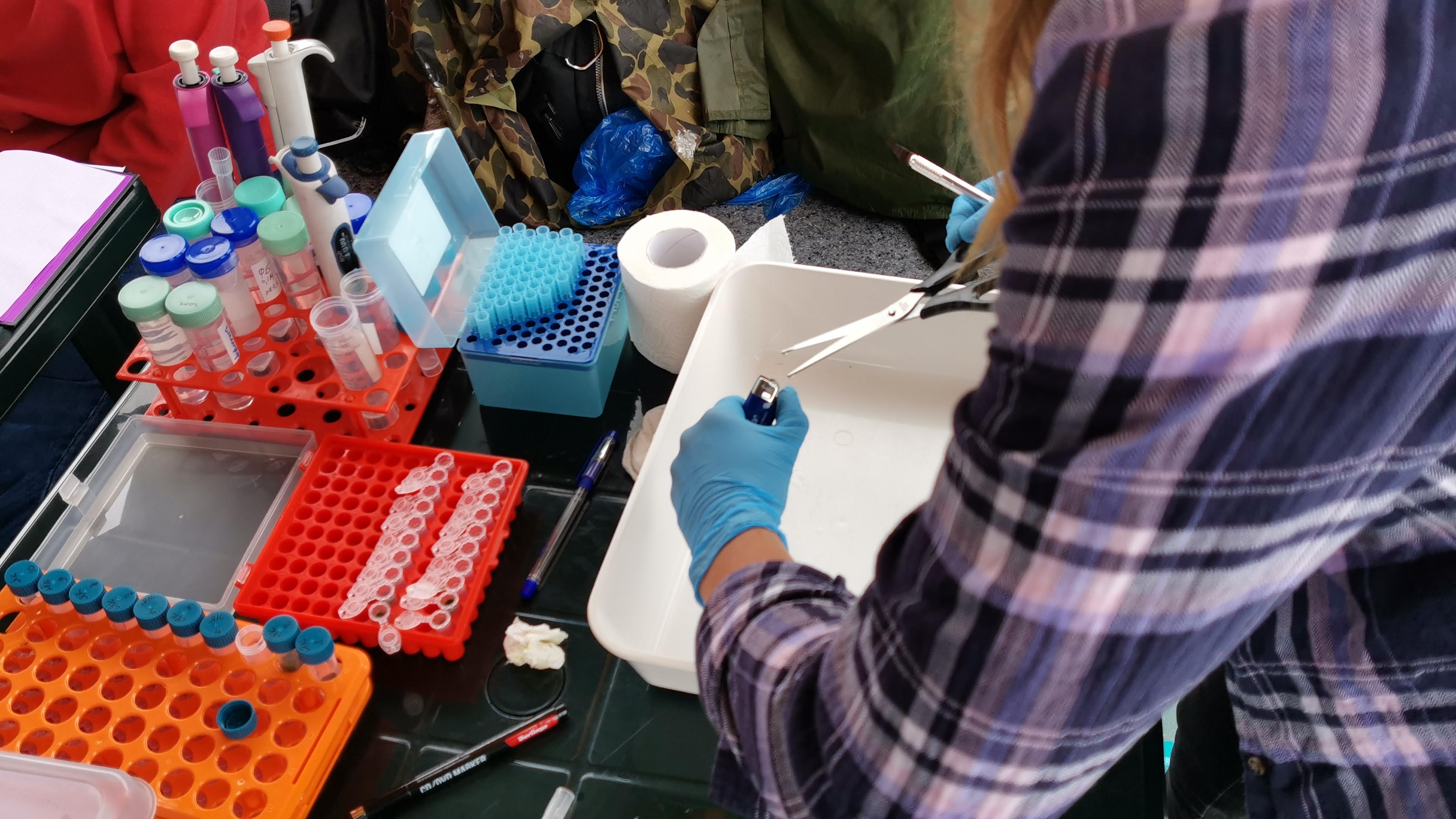Shutdown of the Detector of the Daya Bay Reactor Antineutrino Experiment
On Saturday, 12 December 2020, a special ceremony of the shutdown of the facility of the Daya Bay international neutrino experiment will take place. Scientists will proceed with final data analysis.
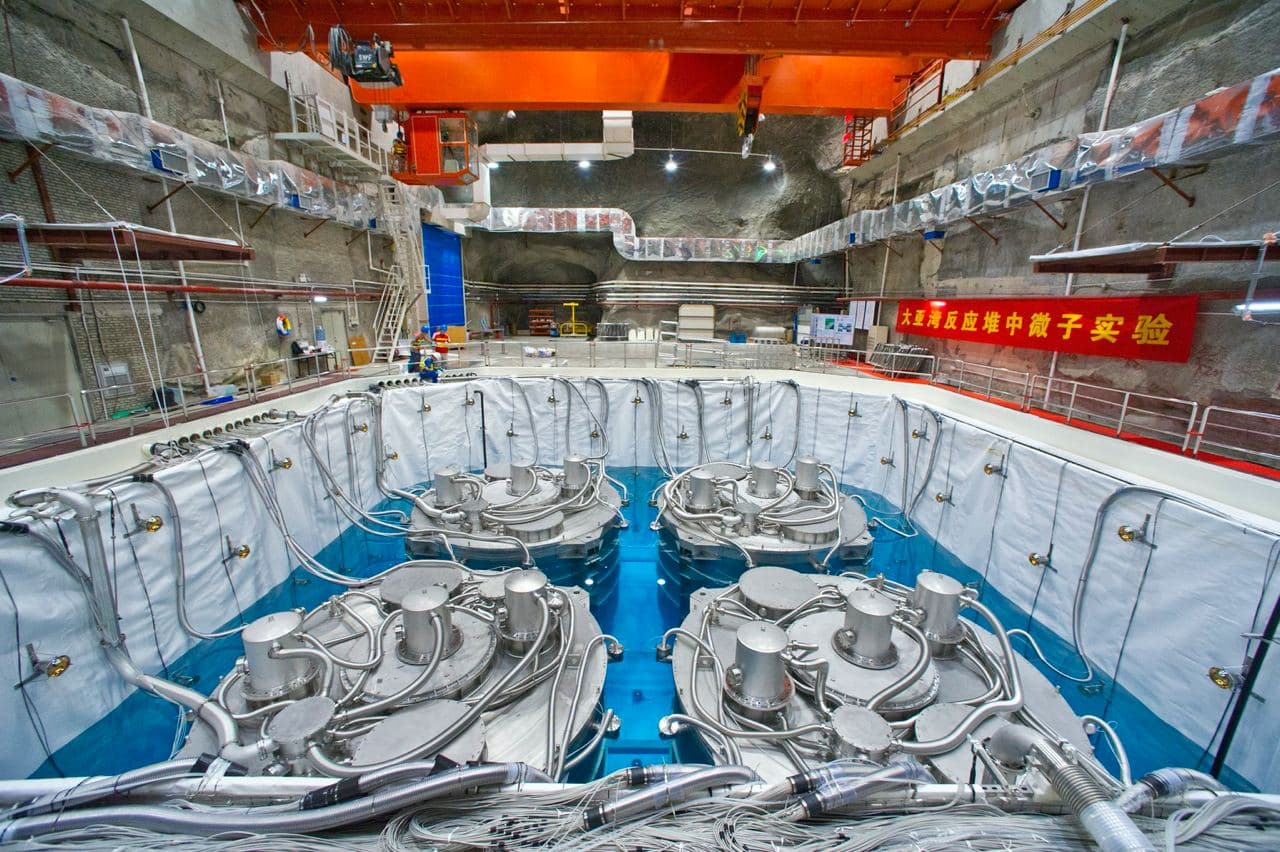
On Saturday, 12 December 2020, a special ceremony of the shutdown of the facility of the Daya Bay international neutrino experiment will take place. Scientists will proceed with final data analysis.
The international collaboration studying reactor antineutrinos in the Daya Bay experiment has finished taking data. Though the experiment is formally shutting down, the collaboration will continue to analyze its complete dataset to improve upon the precision of findings based on earlier measurements. Operating in a cavernous underground space in China, the experiment collected enough data within its first 55 days of operation to announce an important discovery in the early March 2012 — a fundamental parameter of the Standard Model, the neutrino mixing angle $\Theta_{13}$, was reliably measured for the first time.
The experiment, 34 miles northeast of Hong Kong in Guangdong, China, was built through an international effort that featured a first-of-its-kind equal partnership in a major physics project between the U.S. and China.
“We are so pleased to see the success of the experiment, which has made important scientific discoveries,” said Yi-Fang Wang, a former spokesperson of the Daya Bay collaboration who is now director of the Institute of High Energy Physics (IHEP) of the Chinese Academy of Sciences. “The collaboration is truly international, and lessons we learned here are invaluable. We look forward to other collaborations in the future.”
IHEP oversaw the construction of the experimental site and half of the Daya Bay detectors, with the U.S. collaboration accounting for the other half. There were also significant contributions by scientists from Russia, Taiwan, Hong Kong, the Czech Republic and Chile.
Daya Bay’s eight detectors are designed to pick up light signals within the scintillating liquids they contain. These signals are generated by interactions of antineutrinos with hydrogen nuclei, protons. The antineutrinos stream from reactors at the nearby Daya Bay and Ling Ao nuclear power plants.
Nuclear reactors produce a huge number of antineutrinos via the nuclear fission process, and they do so in a precisely controlled way, which makes reactors an excellent place to conduct neutrino experiments and gather high-precision measurements.
Antineutrinos are the antiparticles of neutrinos – abundant subatomic particles that pass through most matter uninterrupted, so they are difficult to detect. Over the past seven decades, scientists have made great progress in designing detectors to pick up the elusive signals of these “ghostlike” particles.
“The Daya Bay detectors work remarkably well, exceeding our expectations,” said Doctor of Physics and Mathematics, Deputy Director of DLNP (JINR), Head of the JINR Neutrino Programme Dmitry Naumov. “This success is central to our discovery.”
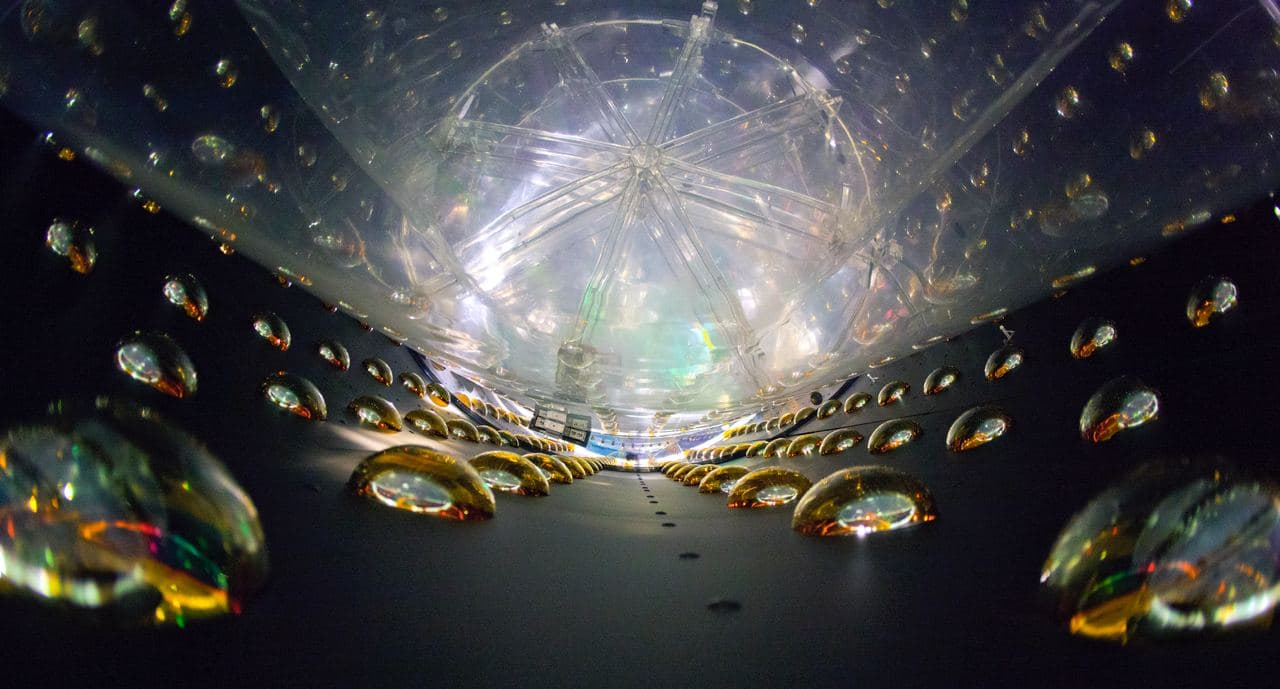 The Daya Bay antineutrino detector before fill-up. Two inserted acrylic cylinders and 192 photomultipliers on the wall.
The Daya Bay antineutrino detector before fill-up. Two inserted acrylic cylinders and 192 photomultipliers on the wall.
In search of a neutrino mixing angle
Located in three underground halls within a mile of the six reactors, the Daya Bay experiment was designed to measure a property related to the particles’ transformations, or oscillations, between three different types, known as “flavours”: electron, muon, and tau. Daya Bay was the first experiment to successfully measure with certainty a “mixing angle” called $\Theta_{13}$.. This mixing angle defines the rate at which neutrinos transform into the three flavors. Since its first measurement in 2012, the precision in Daya Bay’s $\Theta_{13}$. measurement has improved sixfold and is the most precise measurement so far.
To determine $\Theta_{13}$, scientists measured how many neutrinos of a specific flavour – in this case electron antineutrinos – were produced by the nearby reactors. From that number they could determine how many electron antineutrinos they should expect to measure using Daya Bay’s large detectors. Then, they compared the estimate to the actual, measured number. The interaction number shortage was found out, periodically depending on the distance, which allowed for the first time determining the mixing angle $\Theta_{13}$.
The $\Theta_{13}$. measurement, and two other mixing angles measured by previous experiments, help us understand the role neutrinos played in the evolution of our Universe. If scientists observe a difference in certain properties of neutrinos vs. antineutrinos, it could help our understanding of the excess of matter vs. antimatter in the Universe.
Daya Bay scientists are now conducting an analysis of the data from the experiment’s entire nine years of operations. This analysis will enable improved measurements of neutrino properties, including a new precision on $\Theta_{13}$ that is unlikely to be surpassed for decades to come.
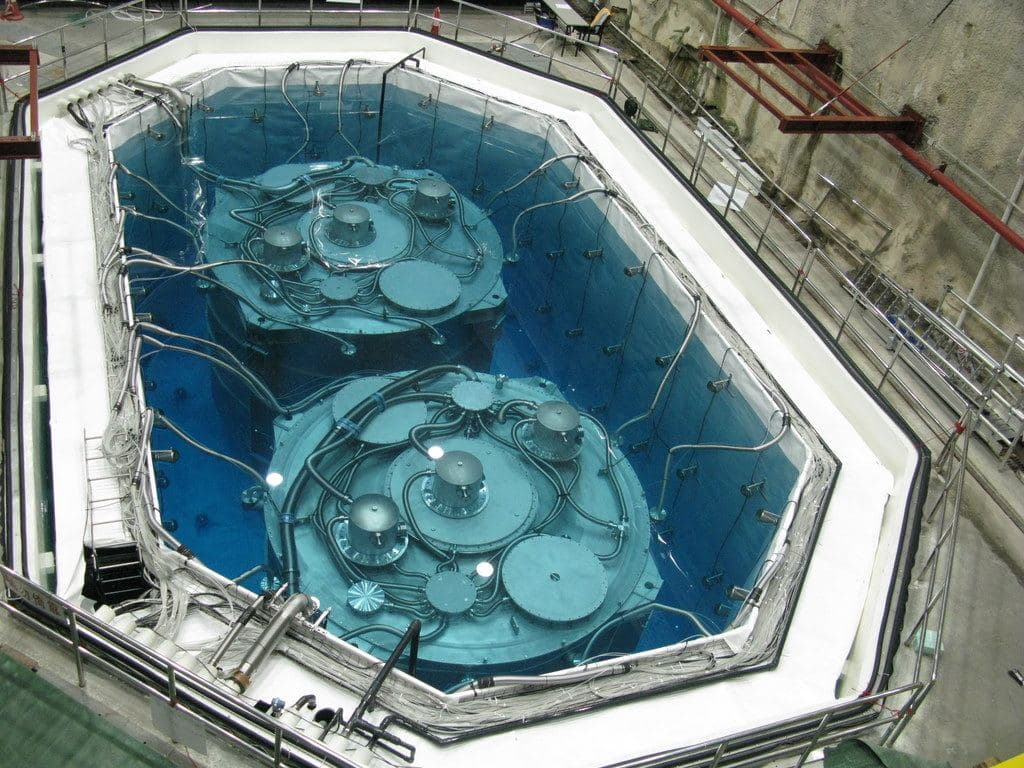 One of the near halls of the Daya Bay experiment. Two antineutrino detectors in the pool filled with water.
One of the near halls of the Daya Bay experiment. Two antineutrino detectors in the pool filled with water.
An unexpected bonus
“The scientific productivity of Daya Bay has gone way beyond our imagination,” said Daya Bay co-spokesperson Jun Cao of IHEP. “Besides pinning down the value of $\Theta_{13}$, a surprising feature surfaced in the measured reactor antineutrino spectrum with Daya Bay’s high-quality data.”
A local excess of antineutrinos – about 10 percent above theoretical expectations at an energy of around 5 million electron volts (5 MeV) – shows up clearly well beyond the uncertainties. The origin of this discrepancy is still unclear and requires further studies.
The studies by the Daya Bay collaboration also found a likely suspect for explaining a so-called “reactor antineutrino anomaly” – measurements of fewer antineutrinos (about 5% less) from reactors than had been expected. One possibility for this anomaly was that some antineutrinos had morphed into a hypothesized fourth type of neutrino called a sterile neutrino. Daya Bay researchers found it was most likely due to incomplete modeling of the predicted rate of antineutrino production for one component of the nuclear reactor fuel. This conclusion became possible due to the analysis of a huge number of antineutrino interactions obtained by the collaboration and also to high precision in determining antineutrino energy.
Additionally, teams of scientists from two major experiments studying neutrino oscillations—the Daya Bay experiment and the MINOS+ experiment—joined forces to produce another analysis that largely ruled out any possibility of sterile neutrinos in their data.
 The Far Hall of the Daya Bay experiment. Four antineutrino detectors in the pool being filled with water.
The Far Hall of the Daya Bay experiment. Four antineutrino detectors in the pool being filled with water.
Implications of the measurements
“The mixing-angle $\Theta_{13}$, which many scientists suspected would be zero, was fortunately found to be much larger than we anticipated when we planned the experiment,” the collaboration co-spokesperson Kam-Biu Luk said. “This bodes well for other active and future neutrino experiments that will attempt to measure the ordering of the masses of the different neutrinos, for example.”
It could also benefit experiments that explore neutrinos’ possible relevance to the universe’s matter-antimatter imbalance. Physicists believe that neutrinos may have played a role in this imbalance through the breaking of a fundamental physics law known as charge-parity (CP) violation. This violation implies that a particle and its antiparticle behave differently.
The Daya Bay’s $\Theta_{13}$ measurement is the most precise measurement so far among the three mixing-angle measurements related to neutrino oscillations. The Daya Bay collaboration was recognized for the success in precisely measuring $\Theta_{13}$ with the award of the prestigious 2016 Breakthrough Prize in Fundamental Physics. Researchers from the Dzhelepov Laboratory of Nuclear Problems, involved into the Daya Bay experiment, also received this high award.
“Almost all knowledge the humankind has gained for the last 60-70 years in particle physics, except the knowledge about dark energy and dark matter, can be perfectly described by the so-called Standard Model,” explained Deputy Director of the Dzhelepov Laboratory of Nuclear Problems of JINR, Head of the JINR Neutrino Programme, Doctor of Physics and Mathematics Dmitry Naumov. “There are some fundamental parameters in the Model, which govern our world all together, but cannot be predicted by the theory—they have to be determined experimentally. The $\Theta_{13}$ angle is one of them. The significance of its experimental determination cannot be overestimated.”
Dubna was involved in the Daya Bay experiment from the very beginning and contributed a lot to manufacturing and delivery of a special wavelength shifter for liquid scintillator, which allowed detecting light flashes resulted from antineutrino interactions. Physicists from Dubna actively participated in processing experimental data. For instance, the result from 2006 was based on the analysis of the Dubna group.
Today, when the experiment nears its end, the collaboration realizes the unique quality of the data obtained. It must be kept for next generations. It is the Dubna group that was assigned the development and support of the data analysis suitable for everyone’s use. On the JINR part, this activity will be headed by Candidate of Physics and Mathematics, Head of the Section of Reactor Antineutrinos Maxim Gonchar.
“Now that we know $\Theta_{13}$ is not zero, we have developed new ways to study the neutrino mass ordering, particularly, in the JUNO experiment, in which preparation our Institute is being actively involved. The $\Theta_{13}$ value determined by us will also help in our search for the charge-parity violation in active and future experiments,” explained Maxim Gonchar. He also emphasized that the active neutrino oscillation experiments, such as T2K in Japan and NOvA in the U.S. and also the next-generation experiments, such as the DUNE project in the U.S. and Hyper-Kamiokande in Japan, have considerably benefited by the $\Theta_{13}$ high-precision measurement in Daya Bay.
The Daya Bay experiment is supported by the Ministry of Science and Technology of China, the U.S. DOE Office of Science High Energy Physics program, the Chinese Academy of Sciences, the National Natural Science Foundation of China, the Joint Institute for Nuclear Research (Dubna) and the Russian Foundation for Basic Research. The Daya Bay collaboration has 237 participants at 41 institutions in China, the U.S., the Czech Republic, and Russia.
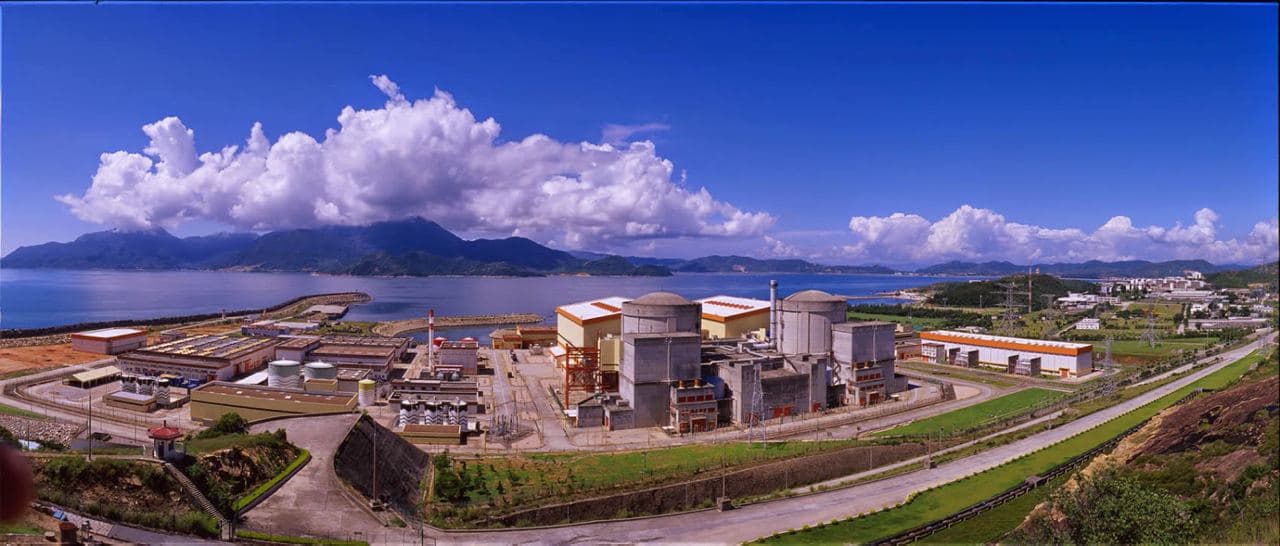 Two reactors of the Daya Bay NPP. The picture is made not far from the Daya Bay experiment control centre.
Two reactors of the Daya Bay NPP. The picture is made not far from the Daya Bay experiment control centre.
***
MEDIA ADVISORY: Daya Bay Completion Ceremony
What: A live ceremony will be held at the Daya Bay experimental site. The shutdown process will also be accessible via live video stream. The ceremony will feature time for questions from registered members of the media.
When: 9:30 a.m. to 12 p.m. Beijing time (4:30 a.m. to 7 a.m. Moscow time; 8:30 p.m. to 11 p.m. U.S. Eastern time; 5:30 p.m. to 8 p.m. U.S. Pacific time) at the Daya Bay experimental site on Saturday, Dec. 12. The live video stream will start from 10:30 a.m. Beijing time (5:30 a.m. Moscow time; 9:30 p.m. U.S. Eastern time; 6:30 p.m. U.S. Pacific time).
Video stream details: To view the live video stream: https://m.itouchtv.cn/liveOb/54269?shareId=NR51XdzA.
A Daya Bay Completion Ceremony celebrating the achievements of the Daya Bay Reactor Neutrino experiment and beginning its shutdown is planned from 9:30 a.m. to 12 a.m. Beijing time (4:30 a.m. to 7 a.m. Moscow time; 8:30 p.m. to 11 p.m. U.S. Eastern time; 5:30 p.m. to 8 p.m. U.S. Pacific time) at the Daya Bay experimental site on Saturday, Dec. 12.
A live video stream, starting at 10:30 a.m. Beijing time (5:30 a.m. Moscow time; 9:30 p.m. U.S. Eastern time; 6:30 p.m. U.S. Pacific time), will detail the shutdown process at the site.
1. The first session. A collaboration event from 9:30 a.m. to 10:30 a.m. (Beijing time) will feature speeches by the Daya Bay experiment founding co-spokespersons Kam-Biu Luk of UC Berkeley and Berkeley Lab and Yifang Wang of Beijing’s Institute of High Energy Physics, and others.
2. The second session. From 10:30 a.m. to 11:10 a.m. (Beijing time) will focus on the shutdown process. This session will also include the airing of a short video highlighting the Daya Bay experiment. The video will feature Chinese narration and English subtitles.
3. The third session. There will be time for media interviews after a photo session.
To view the live video stream of the event: https://m.itouchtv.cn/liveOb/54269?shareId=NR51XdzA.
If you are a member of the media and would like to register to participate in the media Q&A sessions with Daya Bay scientists and representatives during the Completion Ceremony, please email media@lbl.gov.
Contact Information
Jun Cao, co-spokesperson, IHEP, +86-10-88235808, caoj@ihep.ac.cn
Kam-Biu Luk, co-spokesperson, UC Berkeley and Lawrence Berkeley National Laboratory, 510-642-8162, 510-486-7054, k_luk@berkeley.edu
Elena Dubovik, Head of the Group of Scientific Communications of DLNP, JINR, +7 (916) 336-74-79, dubovik@jinr.ru



